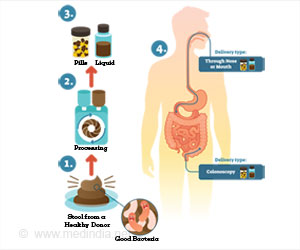A statistically significant reduction in the amount of air trapped in the lungs and an improvement in breathing for patients are the big advantages of the Air way bypass procedure.
Mountain View, CA, October 9, 2007 - Broncus Technologies, Inc., a medical device company investigating the airway bypass procedure for the treatment of emphysema, today announced that the results of its open-label Exhale® Drug-Eluting Stent feasibility study have been published in the October issue of the Journal of Thoracic and Cardiovascular Surgery.
Airway bypass is a catheter-based bronchoscopic procedure designed to reduce lung hyperinflation and improve breathlessness (the clinical hallmarks of emphysema/COPD) by making new pathways for trapped air to exit the lungs. During the minimally invasive procedure, new openings are created in the airway wall connecting the damaged lung tissue to the natural airway. These pathways are supported and kept open by Exhale Drug-Eluting Stents. The hope is to improve quality of life by relieving severe symptoms including shortness of breath and hyperinflation of the chest.Emphysema, a component of COPD, is a chronic, progressive, and irreversible lung disease characterized by the destruction of lung tissue. The loss of the lungs' natural elasticity and the collapse of airways in the lung combine to make exhalation ineffective, leaving emphysema sufferers with hyperinflation because they are unable to get air out of their lungs. Breathing becomes inefficient and patients have to work very hard just to breathe – making normal activities, like walking, eating or even bathing, difficult. Treatment options for most patients with emphysema are currently limited and generally result in anguished patients and frustrated physicians.
The prospectively-defined primary endpoint of this feasibility study was a reduction in residual volume (RV, the amount of air remaining in the lungs after full exhalation) at 6 months. The goal was for a 300mL reduction in RV. Overall the trial surpassed that goal with a 400mL improvement in RV over baseline at 6 months (p=0.04). Patients also showed a statistically significant improvement in the modified Medical Research Council Dyspnea Scale (mMRC), a breathlessness test, of -0.5 points (p= 0.025). Retrospective analysis revealed that patients with the most severe hyperinflation of their lungs (as determined by a residual volume to total lung capacity ratio above the median) derived the greatest benefit from airway bypass. At 6 months after the procedure, these patients showed a mean improvement in RV of 870mL (p=0.022).
“The management of emphysema poses a difficult challenge for the medical community as the disease progressively deprives patients of their ability to perform daily activities. These findings are encouraging because there are so few options for the millions patients who suffer from this disease,” states Paulo F.G. Cardoso, M.D., Ph.D, Division of Thoracic Surgery, Santa Casa de Porto Alegre-Pavilhao Pereira Filho Hospital, Brazil and lead author of the paper. “These results reveal significant improvements in pulmonary function and reduction in breathing difficulties out to six months and indicate that airway bypass is a potentially viable therapeutic option for patients with marked severe pulmonary destruction, whose only current option may be to wait for a lung transplant.”
“The data from this study are very exciting, as they help build the case that airway bypass might reduce hyperinflation and have long-term benefit,” states Cary Cole, CEO of Broncus. “We hope to continue this success with the current, pivotal EASE Trial, our largest clinical study to date.”
Source-Eurekalert
SPH/S





